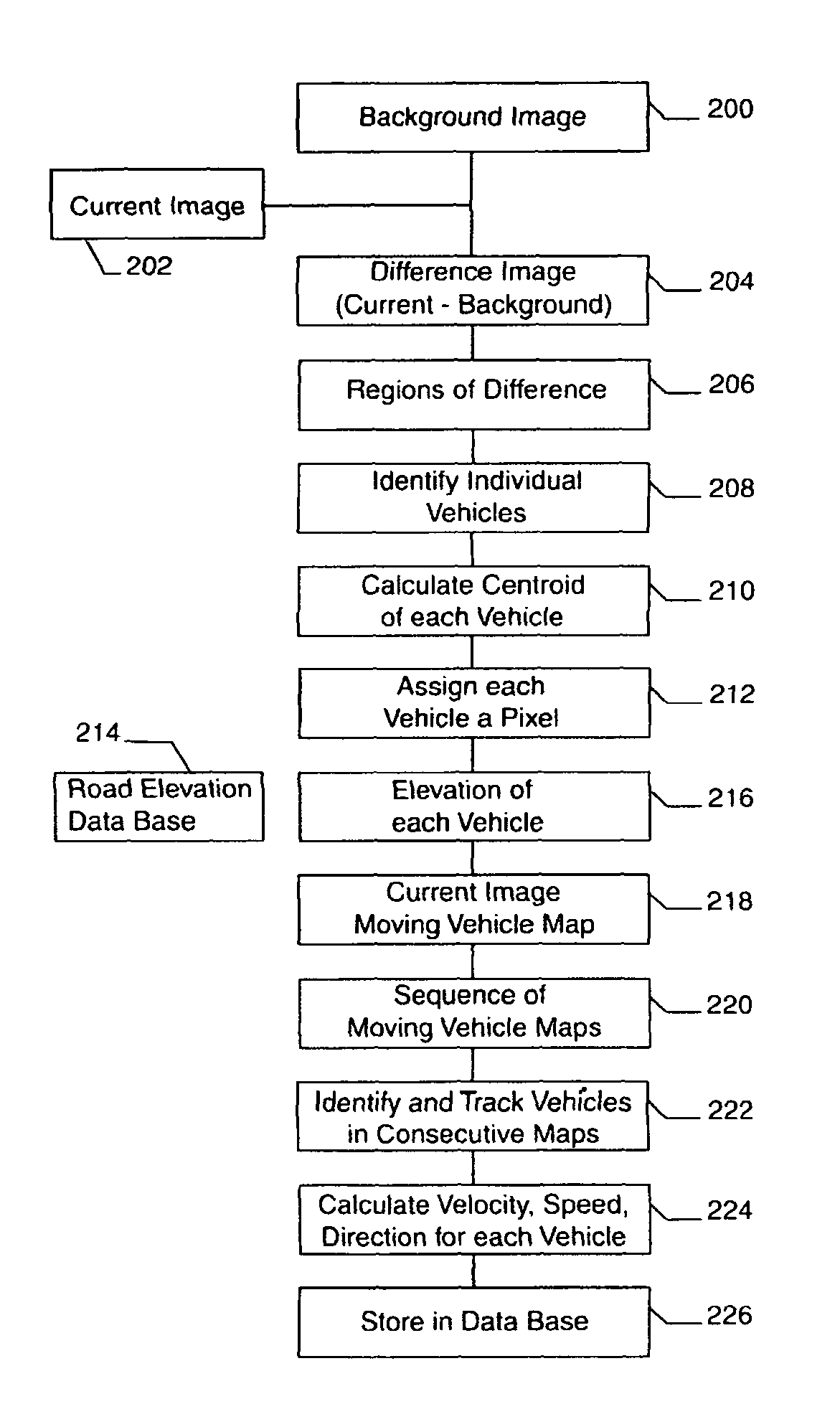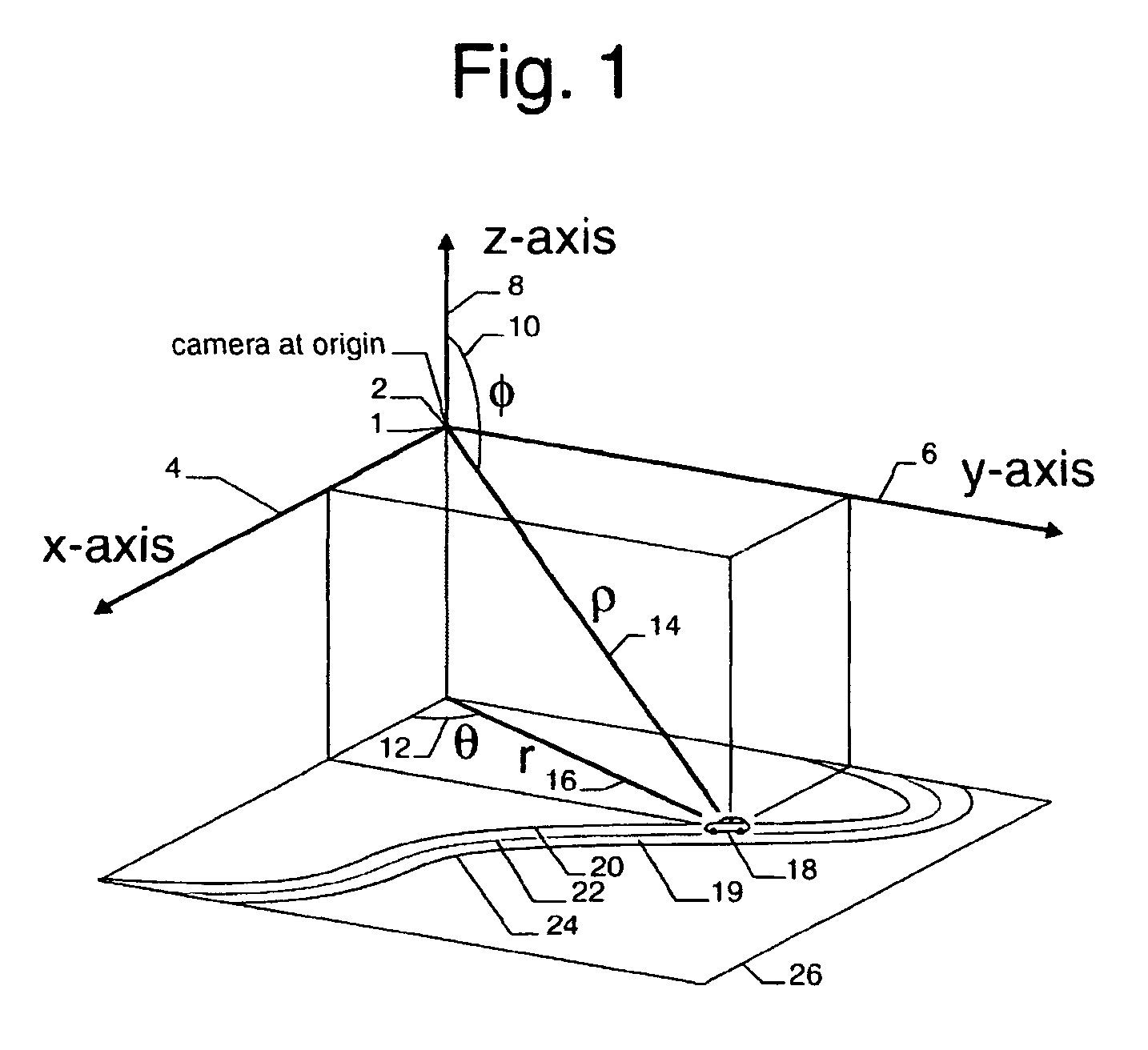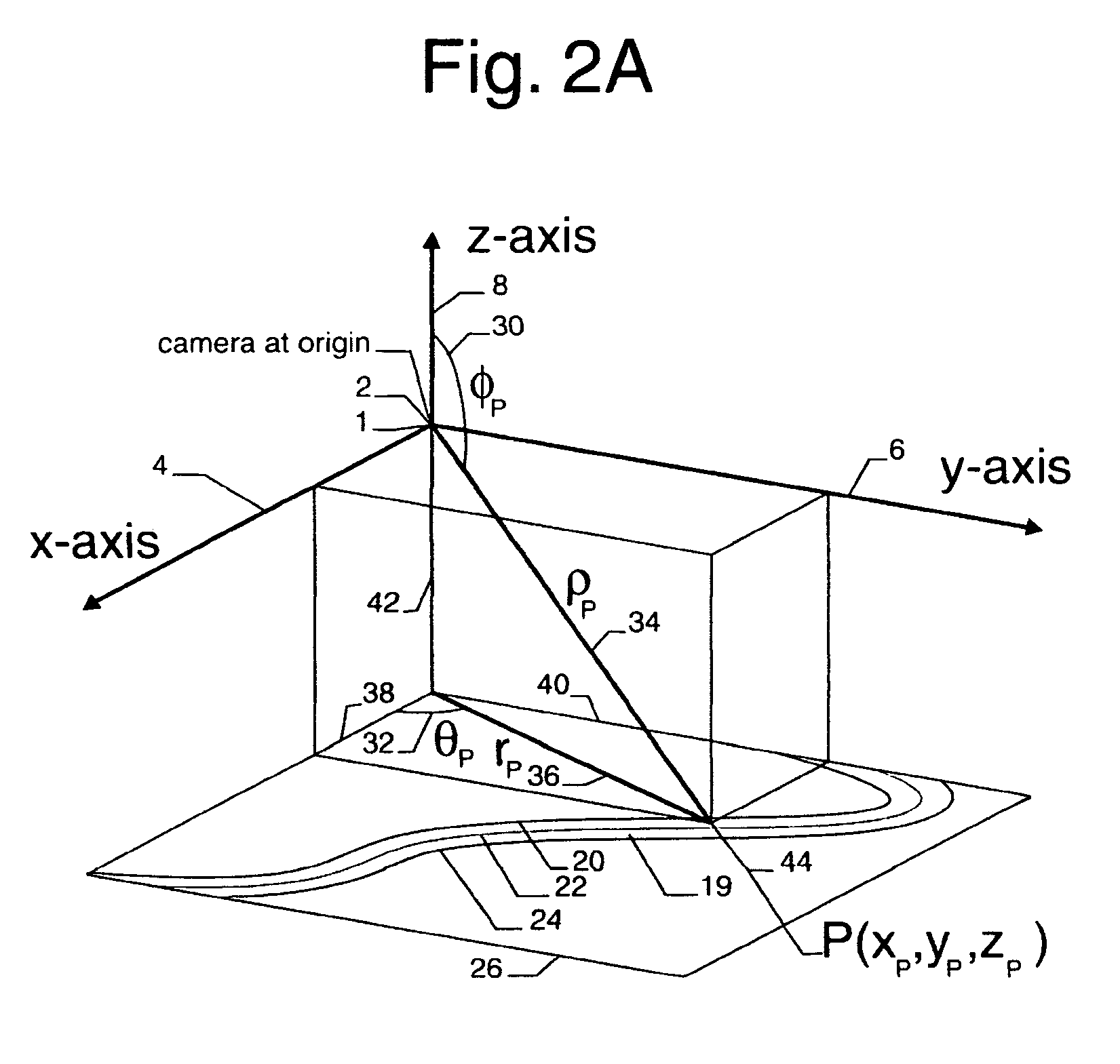Method and apparatus for estimating the velocity vector of multiple vehicles on non-level and curved roads using a single camera
a technology of velocity vector and camera, applied in the field of measuring the position, velocity vector, speed and direction of moving vehicles, can solve the problems of millions of americans being injured each year and millions of americans dying
- Summary
- Abstract
- Description
- Claims
- Application Information
AI Technical Summary
Benefits of technology
Problems solved by technology
Method used
Image
Examples
Embodiment Construction
[0028]The preferred embodiment of the present invention will be explained with reference to FIGS. 1 to 10. Identical parts are denoted by the same reference numerals throughout the views.
[0029]A preferred embodiment of the present invention is a three-dimensional vehicle velocity vector analysis system. According to this three-dimensional vehicle velocity vector analysis system, a single camera 2 is mounted above a roadway system and observes the roadway system in camera 2′s field of view. The roadway system may comprise individual roads 19 which may head in different directions, have different elevations, have elevations, which change with distance, and have curves, which change the direction of the roads. Vehicles 18 traveling on the individual roads 19 may travel in different directions.
[0030]The single camera 2 and a data storage system (not shown) record an image sequence of the vehicles traveling on individual roads 19. Each image of the image sequence is called a frame, the t...
PUM
 Login to View More
Login to View More Abstract
Description
Claims
Application Information
 Login to View More
Login to View More - R&D
- Intellectual Property
- Life Sciences
- Materials
- Tech Scout
- Unparalleled Data Quality
- Higher Quality Content
- 60% Fewer Hallucinations
Browse by: Latest US Patents, China's latest patents, Technical Efficacy Thesaurus, Application Domain, Technology Topic, Popular Technical Reports.
© 2025 PatSnap. All rights reserved.Legal|Privacy policy|Modern Slavery Act Transparency Statement|Sitemap|About US| Contact US: help@patsnap.com



